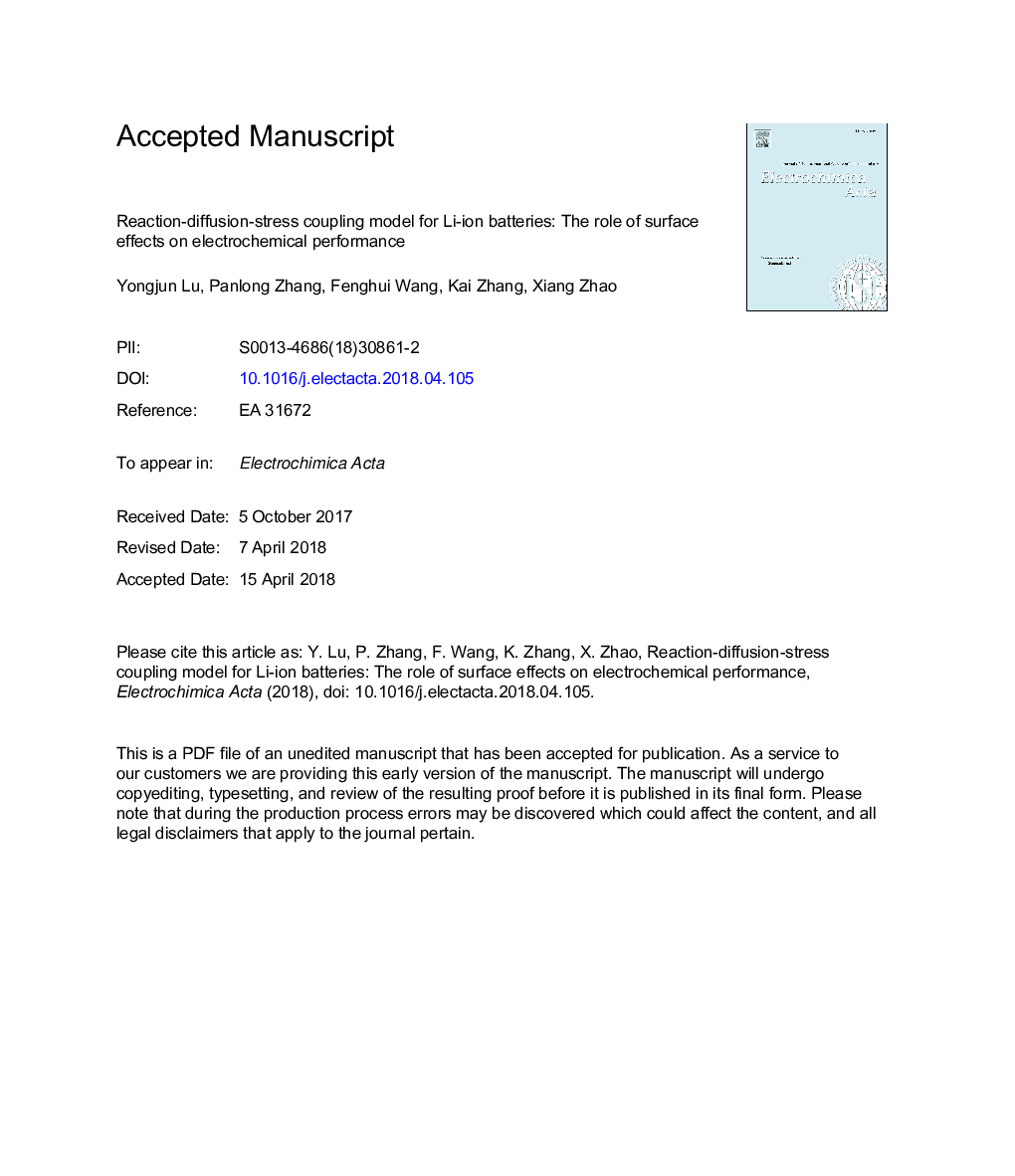| Article ID | Journal | Published Year | Pages | File Type |
|---|---|---|---|---|
| 6603101 | Electrochimica Acta | 2018 | 50 Pages |
Abstract
Recent years, nanostructured design for battery electrodes has emerged as a promising solution to improve rate capability and reliability of the high-capacity electrodes. However, the surface effects arising from small feature size may affect the multi-physical features of electrodes subject to non-equilibrium electrochemical cycles. In this study, a reaction-diffusion-stress coupling model is developed with the contribution of surface effects, which can capture the interactions between surface electrode reaction, diffusion and solid deformation in a nanoparticle of an electrode under non-equilibrium cyclic charge and discharge. Numerical results show that compressive stress at the surface of an electrode particle during insertion inhibits lithium absorption, while tensile stress at the surface of an electrode particle due to ion extraction suppresses lithium desorption with regard to surface electrochemical reactions. When surface mechanics is taken account into nanoscale electrode study, surface tension is found to be responsible for the increase in mechanical stability, as well as the significant reduction in charge capacity during both the galvanostatic and potentiostatic operation in the meantime. By further introducing tunable surface modulus effects, it is shown that the positive surface modulus aggravates charge capacity loss, whereas the negative surface modulus remedies it for a given potential. The results of the study provide a new idea for nano-surface engineering to optimize the design of electrode to meet required durability and electrochemical performance.
Keywords
Related Topics
Physical Sciences and Engineering
Chemical Engineering
Chemical Engineering (General)
Authors
Yongjun Lu, Panlong Zhang, Fenghui Wang, Kai Zhang, Xiang Zhao,
